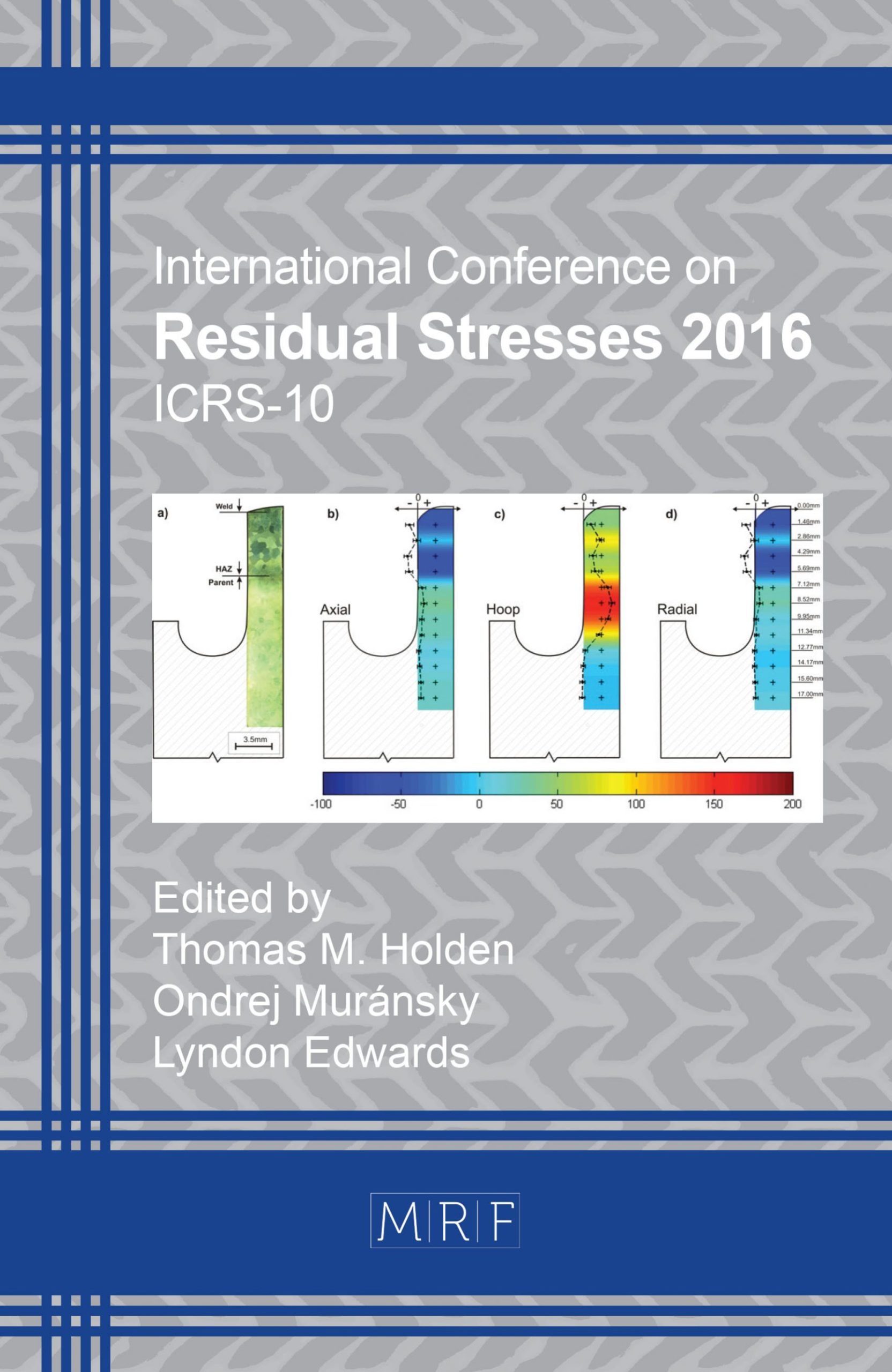Effects of Hydrostatic 2nd Kind Residual Stresses and of Carbon Partitioning During Martensitic Quenching of Low Alloy Steel
J. Epp
download PDFAbstract. In situ X-ray diffraction measurements were performed at the ESRF in Grenoble, France during quenching of two steel grades: the ball bearing steel AISI52100 and the case hardening steel AISI5120. Diffraction frames were recorded during the complete heat treatment cycles and analyzed in order to determine the temperature- and time-dependent evolution of phase contents and lattice parameters. In the case of the AISI52100 with austenitizing at high temperature, the generation of high compressive hydrostatic stresses of 2nd kind was determined. In the case hardening steel, the dominating effect is a carbon enrichment of the austenite accompanied by the generation of compressive stresses. For the ball bearing steel austenitized at low temperature, both effects take place.
Keywords
In-situ XRD, Retained Austenite, Carbon Partitioning, Hydrostatic Stress, Triaxial Stress State
Published online 12/22/2016, 6 pages
Copyright © 2016 by the author(s)
Published under license by Materials Research Forum LLC., Millersville PA, USA
Citation: J. Epp, ‘Effects of Hydrostatic 2nd Kind Residual Stresses and of Carbon Partitioning During Martensitic Quenching of Low Alloy Steel’, Materials Research Proceedings, Vol. 2, pp 283-288, 2017
DOI: http://dx.doi.org/10.21741/9781945291173-48
The article was published as article 48 of the book Residual Stresses 2016
![]() Content from this work may be used under the terms of the Creative Commons Attribution 3.0 licence. Any further distribution of this work must maintain attribution to the author(s) and the title of the work, journal citation and DOI.
Content from this work may be used under the terms of the Creative Commons Attribution 3.0 licence. Any further distribution of this work must maintain attribution to the author(s) and the title of the work, journal citation and DOI.
References
[1] Olsen, G.B., Owen, W.S., Martensite, first ed., ASM International, 1992.
[2] Metals Handbook, Vol. 1: Properties and Selection: Irons, Steels, and High-Performance Alloys, tenth ed., ASM International, 1990.
[3] J. Epp, PhD Thesis, University of Bremen, Shaker Verlag, Aachen (2016).
[4] L. Cheng, A. Böttger,Th.H. de Keijser, E. J. Mittemeijer, Scripta metal mat. 24 (1990) 509-514. http://dx.doi.org/10.1016/0956-716X(90)90192-J
[5] K. Y. Golovchiner, Physics of Metals and Metallography 37-2 (1974) 126-130.
[6] M. Villa, K. Pantleon, M. A. J. Somers, Acta Mat.65 (2014) 383–392. http://dx.doi.org/10.1016/j.actamat.2013.11.007
[7] J. Epp, Adv. Mat. Res. 996 (2014) 525-531.
[8] J. Epp, T. Hirsch, C. Curfs, Metal. Mater. Trans. 43A (2012) 2210 – 2217. http://dx.doi.org/10.1007/s11661-012-1087-7
[9] T.Y. Hsu, Journal de physique IV 5-8 (1995) 351-354.































